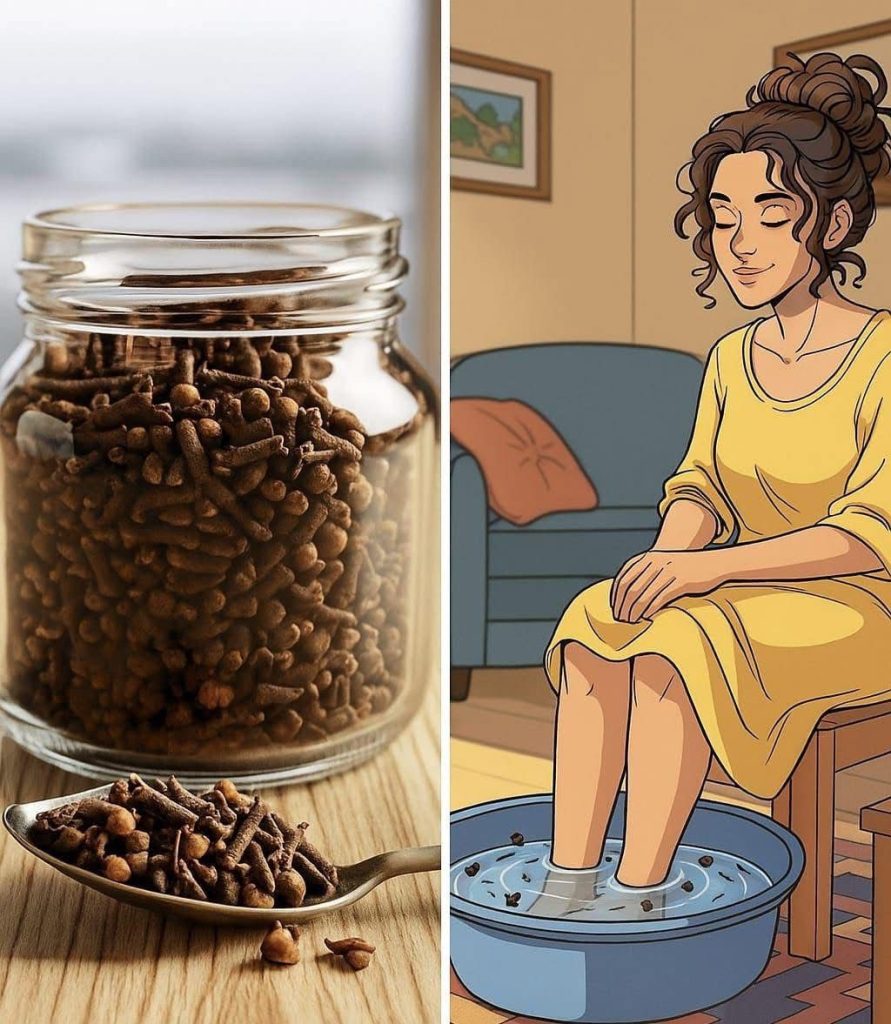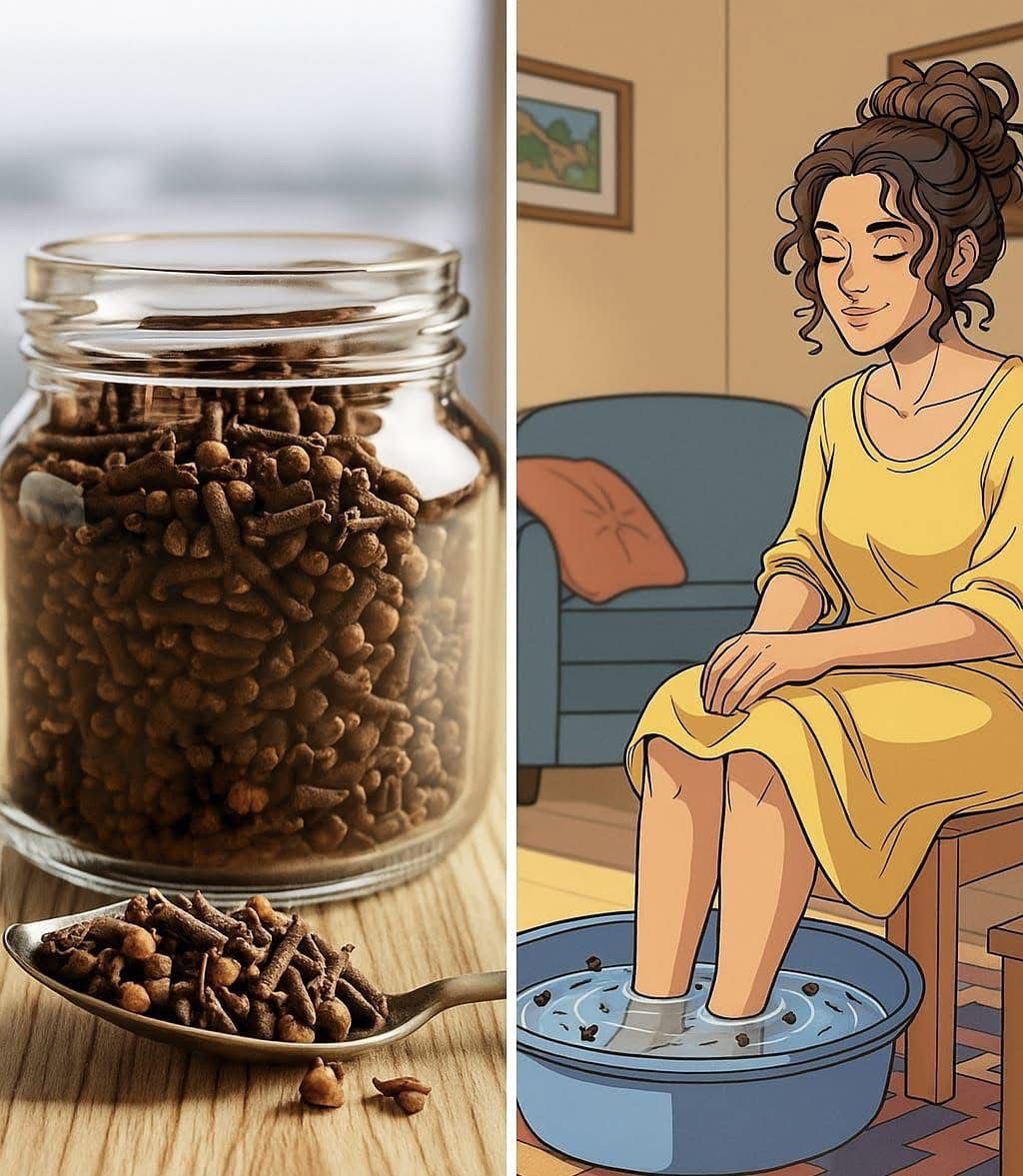
Introduction
Our feet carry us through life, yet they’re often neglected until they ache. One of the simplest and most powerful ways to rejuvenate tired feet is with a warm herbal soak. Among all natural remedies, clove foot soaks stand out for their therapeutic properties. Cloves (Syzygium aromaticum), with their warm, spicy aroma and natural healing oils, have been cherished for centuries in traditional medicine. Used in foot soaks, they provide deep relaxation, ease muscle pain, reduce inflammation, and promote overall wellness.
Ingredients
- 8–10 whole cloves (or 1 teaspoon ground cloves)
- 4 cups warm water (not boiling, around 40–42°C / 104–108°F)
- 1 tablespoon Epsom salt (optional, for muscle relaxation)
- 1 tablespoon baking soda (optional, for softening skin and deodorizing)
- 2–3 drops clove essential oil (optional, for stronger aroma and added benefits)
- 1 teaspoon coconut oil or olive oil (optional, for moisturizing effect)
- Fresh herbs like rosemary, mint, or lavender (optional, for added relaxation)
Instructions
- Prepare the Base:
Heat the water until it’s warm but comfortable to touch. Pour it into a large basin or foot tub. - Infuse the Cloves:
- If using whole cloves, lightly crush them to release oils.
- Add them directly into the warm water.
- Let them steep for 3–5 minutes before soaking.
- Enhance with Additions (Optional):
- Stir in Epsom salt and baking soda until dissolved.
- Add essential oil drops and coconut oil, mixing gently.
- Soak Your Feet:
Place your feet in the basin and soak for 15–20 minutes. Close your eyes, breathe deeply, and let the aroma of cloves relax your body. - Post-Soak Care:
- Pat feet dry with a soft towel.
- Massage with a little coconut or olive oil for extra nourishment.
Methods of Use
- Daily relaxation: Use plain clove water soak for calming tired feet.
- After exercise: Add Epsom salt to reduce muscle soreness and stiffness.
- For skin softening: Include baking soda and finish with gentle exfoliation.
- For aromatherapy: Combine cloves with lavender or mint essential oil.
History
Cloves have a long and fascinating history:
- Traditional Medicine: In Ayurveda and Chinese medicine, cloves were used to improve circulation, relieve pain, and disinfect wounds.
- Middle Ages: They were prized in Europe for their warming and cleansing properties.
- Modern Wellness: Today, clove oil is used in aromatherapy, massage therapy, and natural skincare for its antibacterial and anti-inflammatory powers.
Benefits
- Relieves stress and anxiety through warm water therapy and aroma.
- Soothes tired, aching feet after long hours of standing or walking.
- Boosts circulation thanks to clove’s warming effect.
- Natural deodorizer, fighting foot odor with antibacterial properties.
- Softens rough skin and helps with cracked heels.
- Supports immunity (clove contains eugenol, a natural antioxidant).
Variations (Formations)
- Detox Foot Soak: Add lemon slices and ginger along with cloves.
- Luxury Spa Soak: Combine cloves with rose petals and lavender oil.
- Cooling Summer Soak: Mix cloves with mint leaves and a few ice cubes.
- Healing Soak for Colds: Add cloves, cinnamon sticks, and eucalyptus oil.
Conclusion
A Clove Foot Soak is more than just pampering; it’s a natural ritual of self-care. With just a few ingredients from your kitchen, you can create a spa-like experience that relieves pain, restores energy, and calms the mind. Whether after a long day at work, a workout, or simply as a weekend treat, this soothing soak will leave your feet refreshed and your spirit uplifted.
